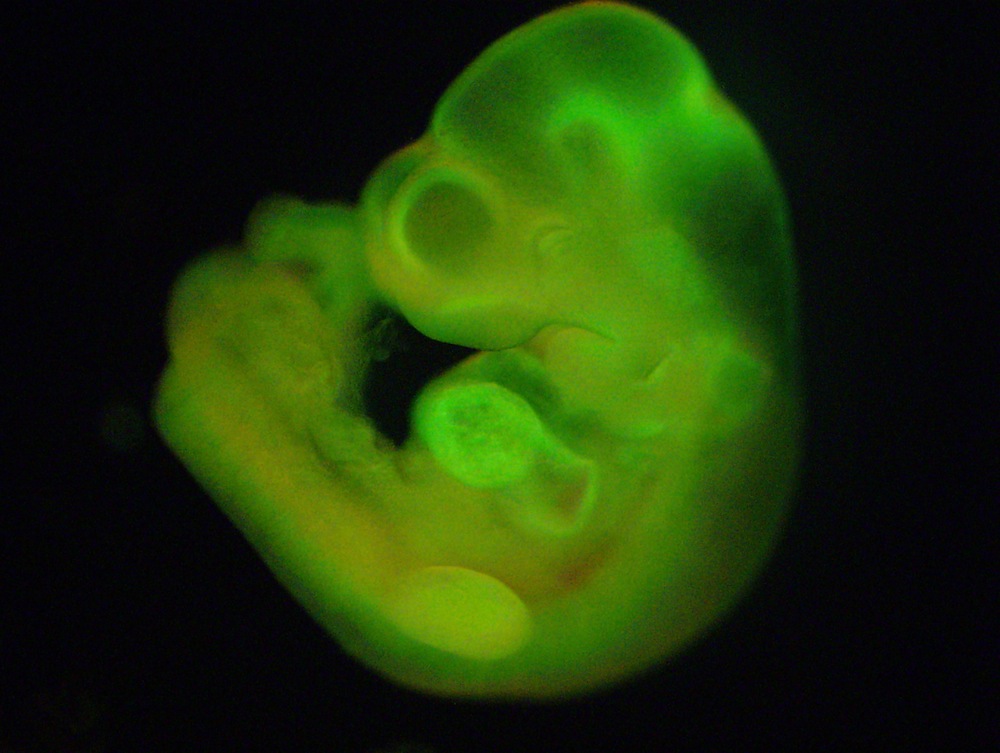A New Method for Making Stem Cells

Scientists have found a new way of creating stem cells, which are cells that have the ability to turn into any type of tissue, using mouse cells. If the method works for human cells, it could ultimately be used to create tissue for people who need organ transplants, and to study diseases such as cancer.
The new method involves exposing cells taken from a mouse spleen to an acidic environment. After doing this, the scientists found they had created cells that were "pluripotent" — capable of turning into most types of cells in the body, including those found in the lungs, muscle, bone, blood, skin or nervous system. The researchers called the stem cells they made "STAP cells" (an abbreviation for stimulus-triggered acquisition of pluripotency).
If the findings are replicated, "this result has the potential to be very significant," said Linzhao Cheng, a professor of medicine and oncology at the Johns Hopkins University School of Medicine, who was not involved in the research. [Video: STAP cells develop into an embryo]
Researchers in Japan first demonstrated the ability to make stem cells from adult cells in 2006. This method uses viruses to insert new genes into adult cells, and produces cells called induced pluripotent stem cells (iPSCs).
But the new method of using acid doesn't require manipulating the cells' DNA, and may even be faster, researchers said.
The study not only shows that STAP cells offer an alternative way to generate stem cells for regenerative medicine, but also that they could help scientists learn about how tumors develop in cancer, Cheng told LiveScience.
Reprogramming cells
Get the world’s most fascinating discoveries delivered straight to your inbox.
Normally, once cells in the body have become specialized — for example, by becoming spleen cells – they can no longer change course and develop into other types of cells. One goal of stem cell research is to find ways to reset adult cells, so that they can change course and grow into whatever tissue a person might need. That could mean a replacement of heart tissue damaged by a heart attack, or a new lung kidney to replace one ravaged by cancer.
Common wisdom holds that in order to make cells revert to their unspecialized state, researchers must either transfer the cell nucleus, or add a complex cocktail of substances that control how DNA gets made into proteins.
"I asked, can it be done without manipulating the nucleus?" Haruko Obokata of the RIKEN Center for Developmental Biology in Japan, leader of the research described online today (Jan. 29) in two papers in the journal Nature, told reporters.
Studies of plants have shown that a stressful environment can reprogram cells into an immature state. And, from this state, the cells can develop into an entirely new plant. But no one had reprogrammed animal cells in that way. [Inside Life Science: Once Upon a Stem Cell]
Obokata and her colleagues developed a new method to reprogram adult mouse cells. They took spleen cells from 1-week-old mice and bathed the cells in acidic fluid, at human body temperature, for 25 minutes.
They found that after the acid treatment, the cells indeed reverted to a pluripotent state like that seen in embryonic stem cells. The researchers used the same method to convert cells from brain, skin, muscle, fat, bone marrow, lung and liver tissues into stem cells, successfully.
The scientists tested the cells' potential by injecting them into mouse embryos that were already growing, but still at a very early stage of development. The researchers found these embryos developed into healthy mice that were "chimaeras," meaning they contained genetic material from both the STAP cells and the original cells of the embryo.
In a second study, the researchers found the STAP cells could develop into not only into the cells of the mouse embryo, but also into the cells of its placenta — a strong demonstration of the cells' potential to develop into different cell types.
In addition, the scientists showed that STAP cells could be converted into self-renewing stem cells similar to embryonic stem cells.
Way of the future?
Compared with the time it takes to perform the current method, of creating iPSCs, the new method is much quicker, Obokata said.
In addition to the acidic treatment, the researchers tested whether other stresses — such as squeezing the cells, heating them or depriving them of nutrients — could also coax mature cells into becoming pluripotent. Initial findings suggest that some of these other stresses could have the same effect as the acidic treatment, the researchers said.
Paul Frenette, a stem cell biologist at Albert Einstein College of Medicine in New York who had no role in the study, called the new method "very exciting."
Many scientists have been spending a lot of effort on finding ways to reprogram cells, so achieving this by simply changing the acidity of the environment is remarkable, Frenette told LiveScience.
Other labs will try to replicate the findings in mice, and ultimately in human cells. The new method is"very easy to do, so we will see how quickly it's reproduced," Frenette said.
Editor's Note: This story was updated at 2:53 p.m. ET Jan. 29, to specify that cells from brain, muscle and other tissues were also converted to STAP cells.
Follow Tanya Lewis on Twitter and Google+. Follow us @livescience, Facebook & Google+. Original article on LiveScience.



